Maps fascinate most people, and what started this Vizag mapping quest was the enthusiastic Vizag Heritage Narrator, Jayshree Hatangadi, who recounted how the most recent map of Vizag fell into her lap at the 2022 Presidential Fleet Review. This Navigation Map of the 2022 Fleet Review brought together the old and new maps of Vizag since the mid-1700s. John Castellas describes the changing social life of old Vizag and the growth of Waltair from the detail contained in these old maps.
Like most people, I have grown to appreciate and use a geographical atlas, travel maps, airline and road maps and online maps. Still, most of all, I developed an appreciation of historical maps of Vizagapatam, many of which are beautiful works of art that often reveal more about their cartographers and the social history of the day. These maps of Vizag capture the towns’ development in 50-year blocks from the mid-1700s.
The earliest maps of Vizagapatam were English and French military maps describing the capture of Vizag by the French in 1757. Orme’s illustration was printed in the book A History of the Military Transactions of the British Nation in Indostan: from the Year MDCCXLV Vol.1 by Robert Orme and illustrated the town’s key features in the mid-1700s.
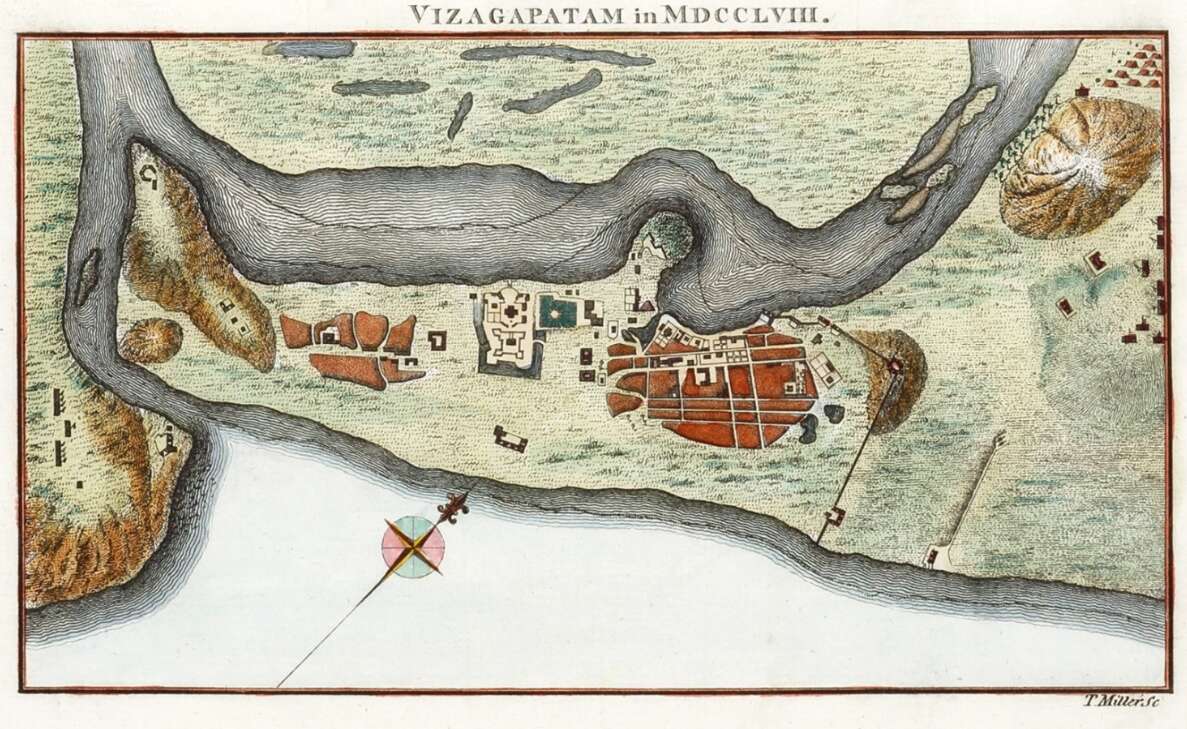
The French illustrated a similar map but included a scale for dimensions and details about the Fort, Government House and defences. Titled ‘ Asie. Presqu’ile de l’Inde en decà du Gange. Côte orientale… Visigapatnam aux Anglais’, this 1757 map contains the note ‘Par le capitaine du génie Leveux. Cette planche comprend : Détail du fort et du gouvernement, levé en 1757. Plan de la ville et de non défenses avec le terrain adjacent, levé en 1757 lors de la prise de cette place par les troupes française sous les ordres de M. de Bussy’ which translates to …By the learned captain Leveux. This plate includes: Detail of the fort and the government surrounds in 1757. Plan of the city and poor defences with the adjacent ground, raised in 1757 during the taking of this place by the French troops under the orders of Marquis. de Bussy.
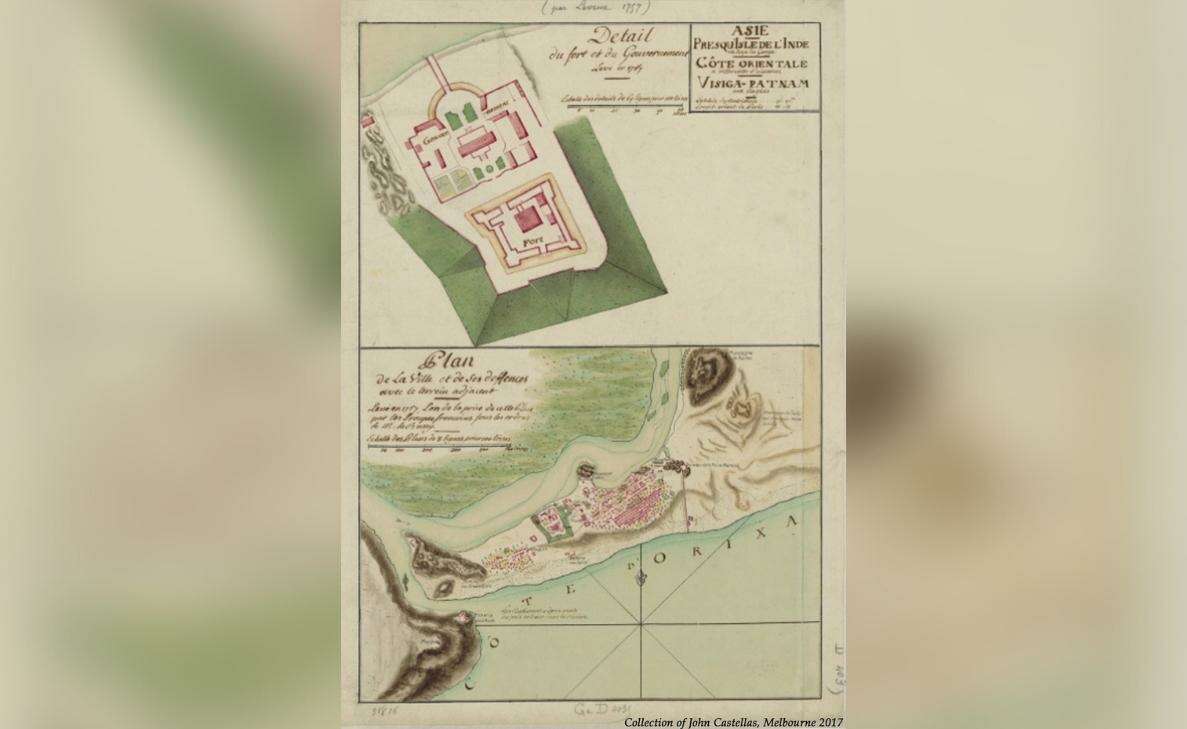
The map clearly labels the mosque and battery on Dolphins Nose Hill, Sand Hill and Mound of Rocks that commands the city, barracks, bastion of Pointe Martin, Gate Petta, Black Rocks where gunpowder was stored, Battery for salutes, Store, Hill of Mosquitoes, and lookout points.
Following the end of the Anglo-French wars in 1758, the first English cartographers mapped Vizag, and the French maps showed the town’s expansion.
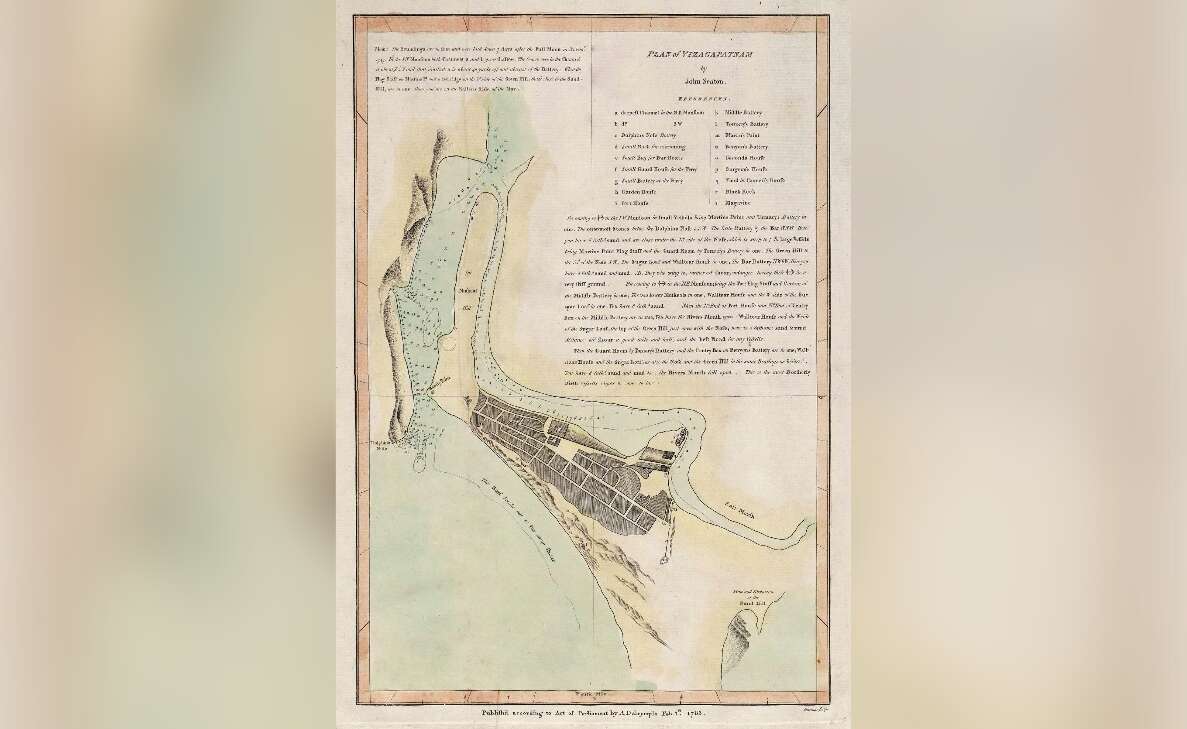
In about 1777, a French map captioned Visigapatam illustrated about 20 years of development. The Garden House to the left of the fort (later to become the Collectors Office in the 1800s and Queen Mary’s Girls School in the 1900s) is one of many additional buildings. A series of buildings replaced the Government House. To the right of the fort are a hospital and army mess.
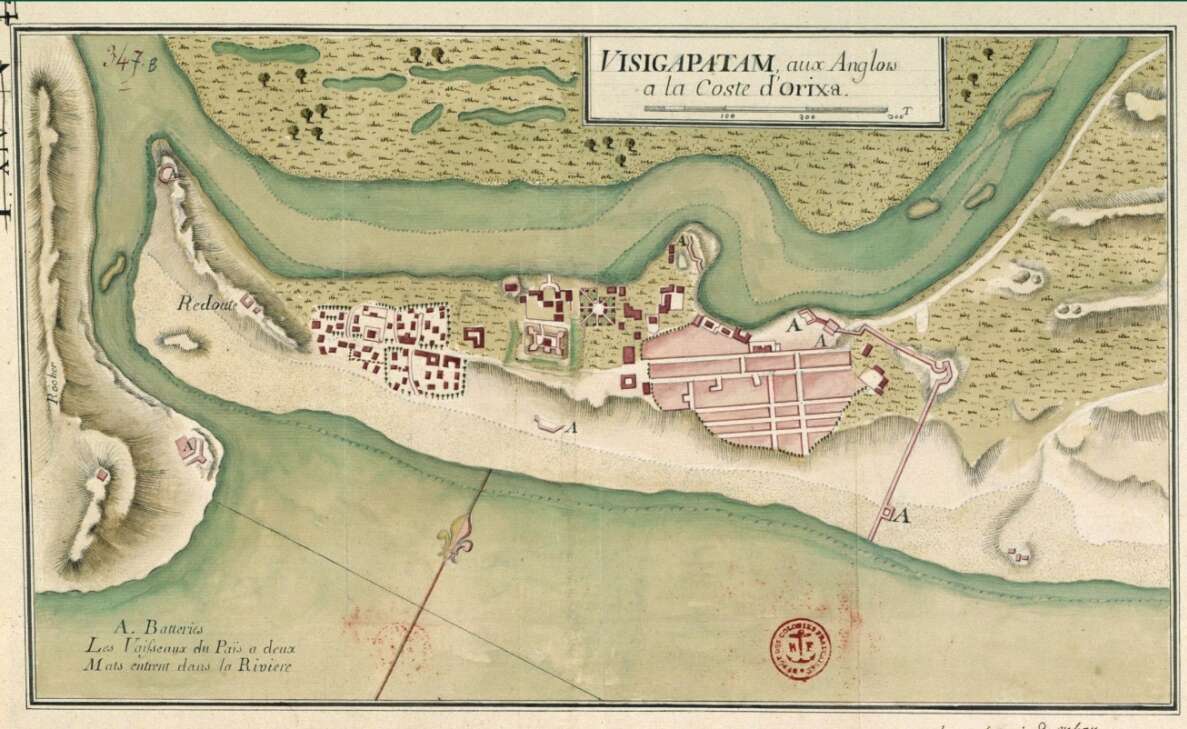
A map of Vizag in 1843 illustrates the old town was dominated by administration buildings, the Arsenal, Zillah Court House, Magazine, Barracks, Hospital and Guardrooms. The Cutcherry is the area of the Police Headquarters and Grounds, and Allipoorum Pagoda was the Hindu Sacred site. There is the Arrack Godown (the administrators made money on selling arrack to the population), and on the Beach Road was the Congee House (military slang for confinement cells for drunks).
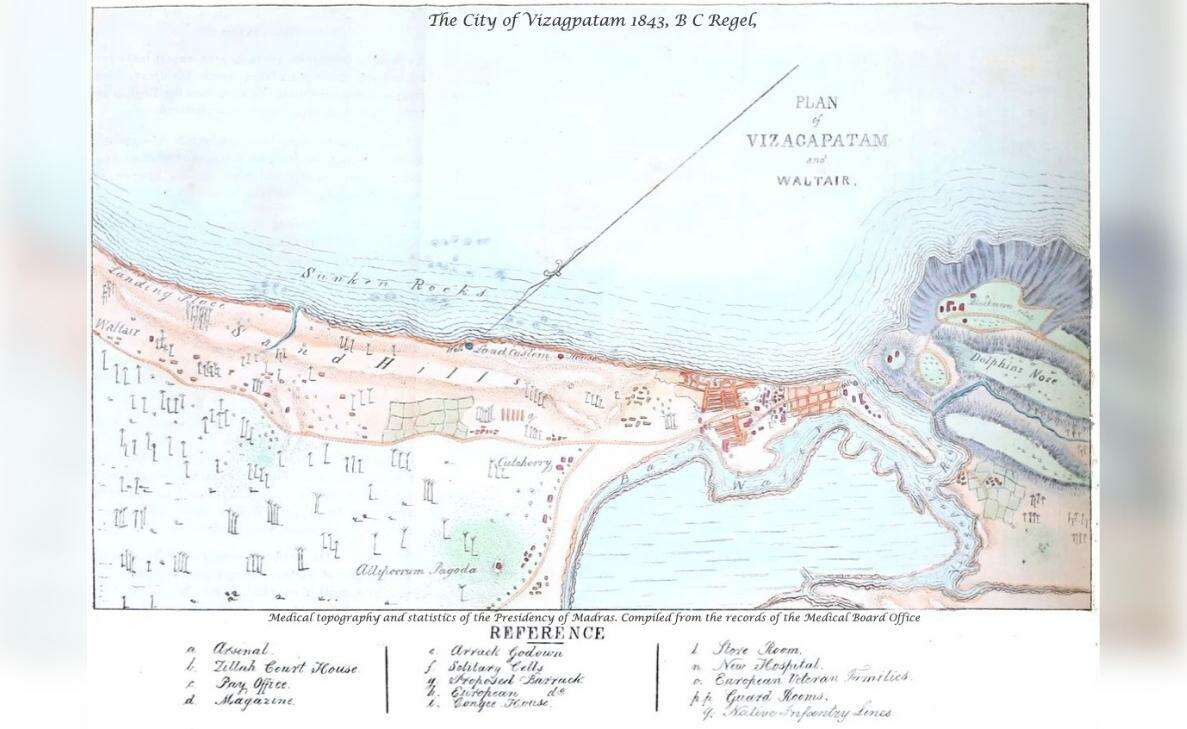
Blackmore’s Estate on Dolphin’s Nose, Waltair, the ferry, wells, the backwater and the Vizagapatam River leading to the sea are noted in the map detail.
Development of the town became a focal point for local businessmen, and many a scheme to build a harbour were drawn up in the late 1800s. One such plan was illustrated for GL Narsinga Row, who proposed underwriting the building of a harbour in 1875 and canvased the outer breakwater concept supported by Sir Arthur Cotton, the eminent engineer of Vizag beach groynes and Godavari irrigation development fame.
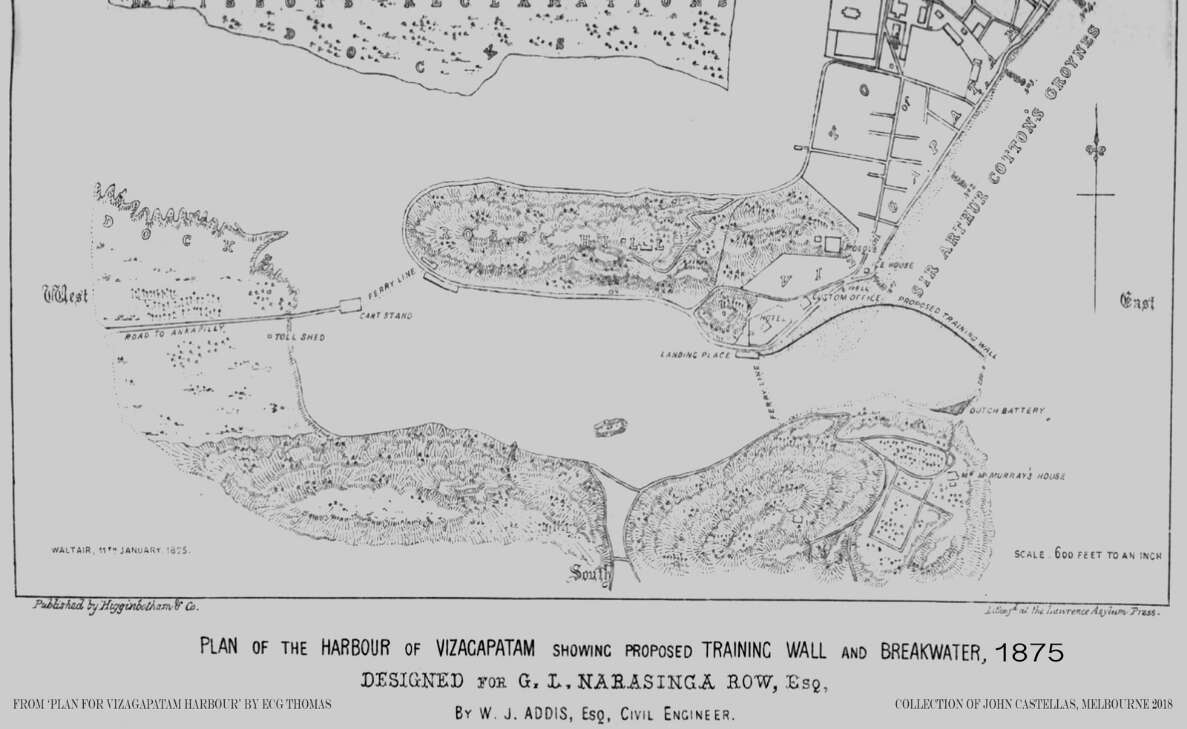
The GL Narasinga Row map of 1875 illustrates the cart track to Ankapally (old spelling), the Cart Toll Gate, Sir Arthur Cotton’s Groynes on the beachfront, Vizag’s first hotel, Custom’s House, the Ice House, Ross Hill and Dr Tissot’s Reclamations of the backwater extending into Gannapuram. In the late 1800s, European residents and wealthy Zamindar families considered Waltair a distant town that required a horse and carriage for access. The Waltair map of 1880 clearly illustrates the four carriage roads from Vizagapatam to the Waltair Uplands and the coast road to Vizianagram. This hill was named Kailash Hill by its sole resident, who lived in the only bungalow on its summit. The locals called it ‘Thomas Folley, ‘ mocking its only resident – District Judge ECG Thomas.
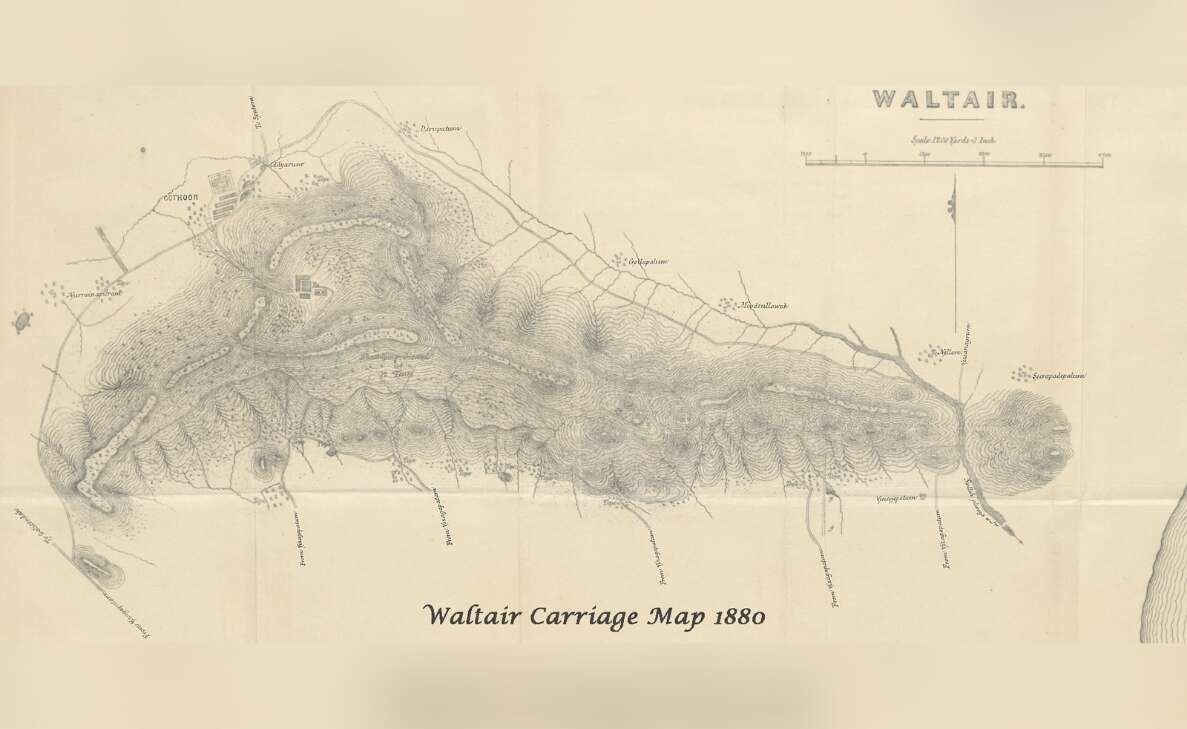
By the late 1800s and early 1900s, the building of the railway linked Waltair to the Vizag Port area. Surfaced roadways linked Vizag and Waltair, and new roads reached into Chinna Waltair and Vizianagram and Bhimilipatam. Scandal Point was the original limit of the Beach Road and township, but Zamindars established Summer Bungalows along the shore up to Lawson’s Bay. Some eminent families funded the roads from Daba Gardens to the beach and extended the Beach Road to Lawson’s Bay.
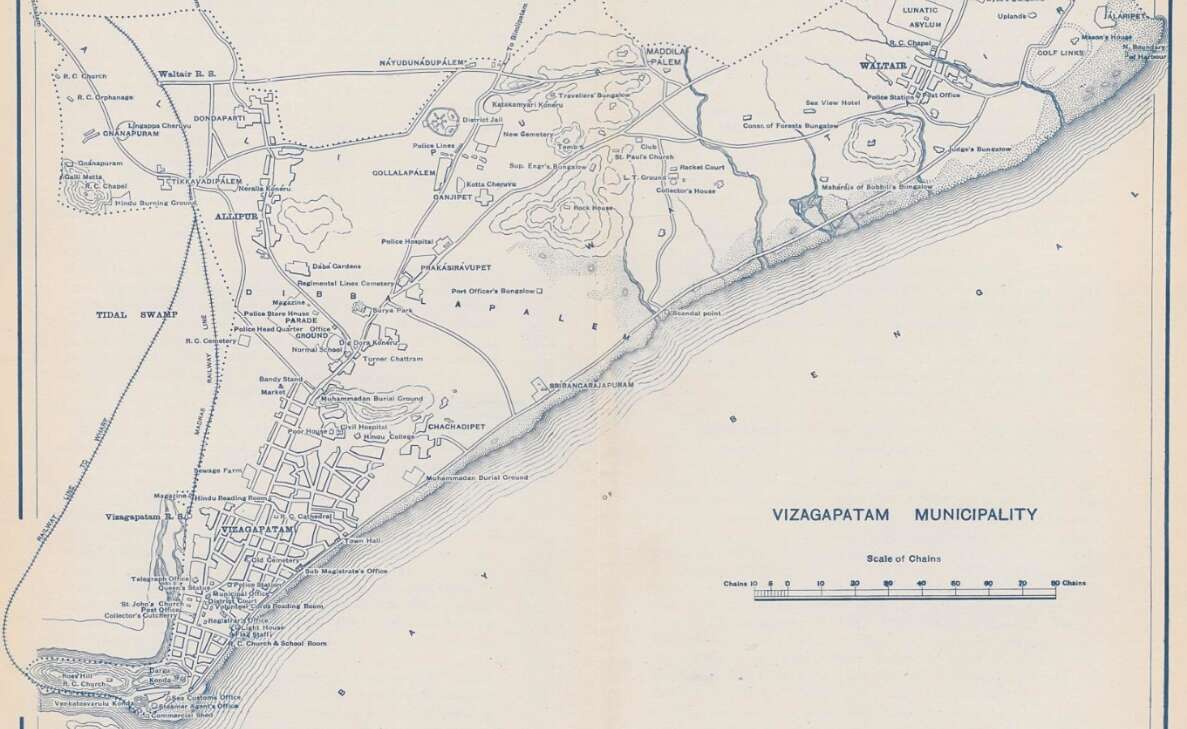
Maritime vessels were the mainstay of Vizag’s commerce, and as steamers replaced sailing ships, the discovery of manganese and coal accelerated the harbour construction plans for their export. The Government approved the new inner harbour in 1916, construction started in 1925, and it was open to commercial traffic in 1933.
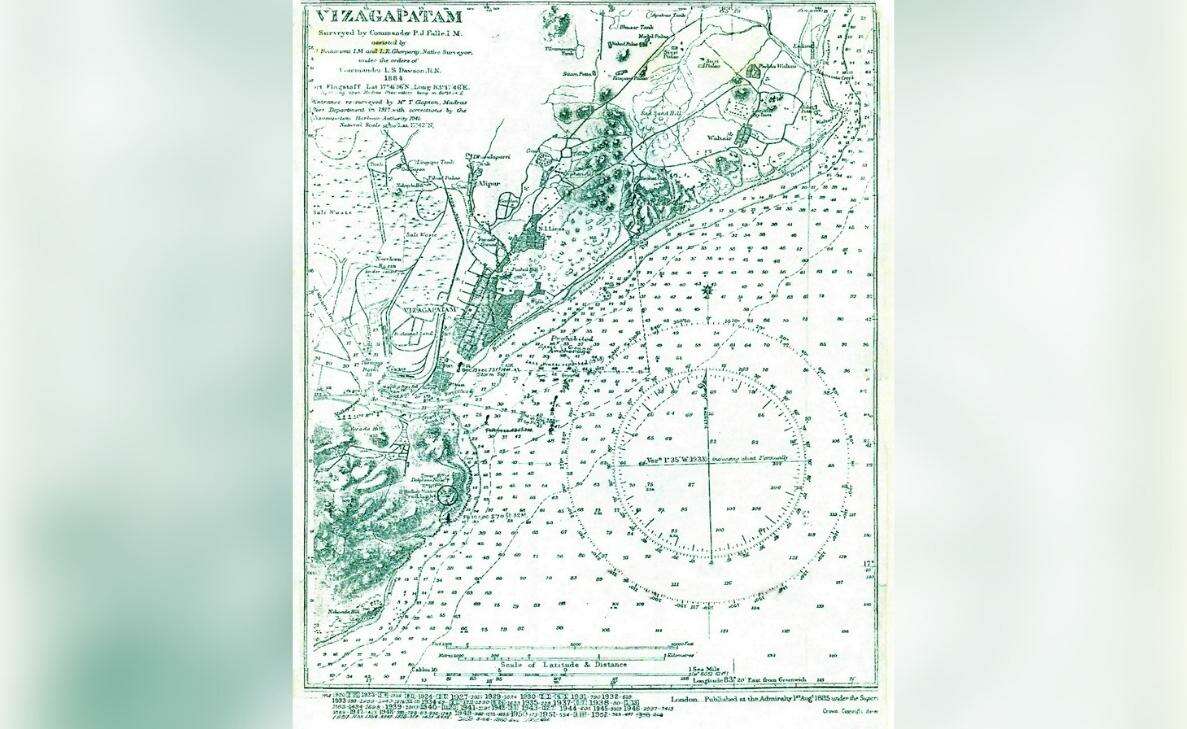
On the walls of the Waltair Club hangs a map that is a testament to the development of Vizag. Originally published by the Admiralty (London) in 1885, this navigation chart was kept up to date for successive changes to the year 1952. The map outlines the depth of the waters around Vizag, and the latitude and longitude of key maritime features like flagstaffs, warning lights and lighthouses. The map includes the additions to the navigation channel, the inner harbour and the Turning Basin. The landmarks listed include the new Collectors Office, Waltair Club, Goal, Orphan Asylum, Lunatic Asylum, Police Parade Ground and Water Tanks.
Map-making has come a long way. So next time you look at satellite images, Google Maps, use GPS or a digital navigation aid on your car dashboard or digital device; remember the days of elementary map making that has led to today’s sophisticated science.
Should you have an anecdote or history on Vizag, the author would appreciate you contact him at jcastell@ozemail.com.au
Written by John Castellas, whose family belonged to Vizag for five generations. Educated at St Aloysius, migrated to Melbourne, Australia in 1966, former General Manager Engineering at Boeing & Qantas Airways, in retirement Lecturers in Aviation Management at Swinburne University and is a Vizag aficionado.


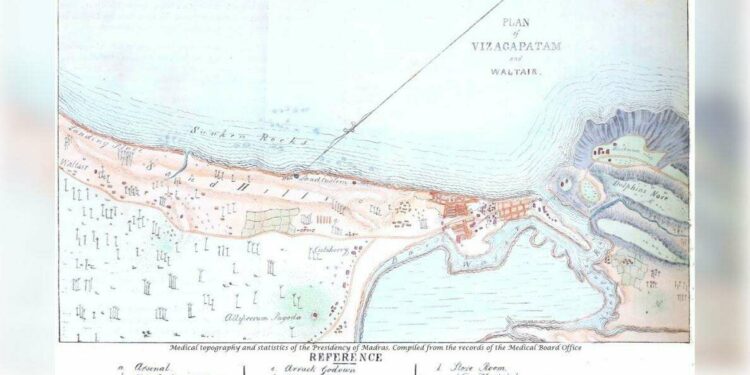







Discussion about this post